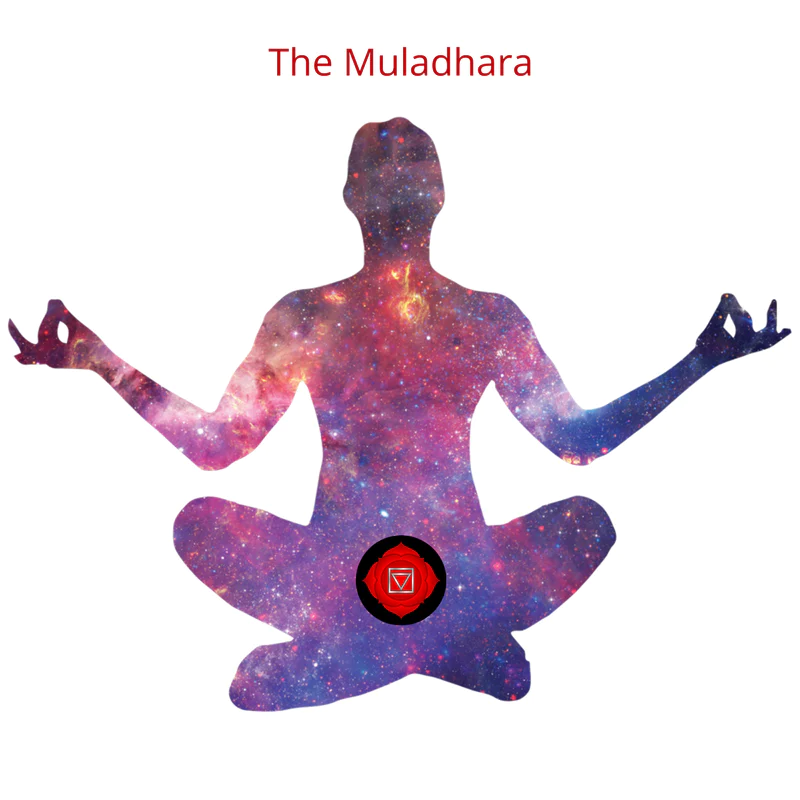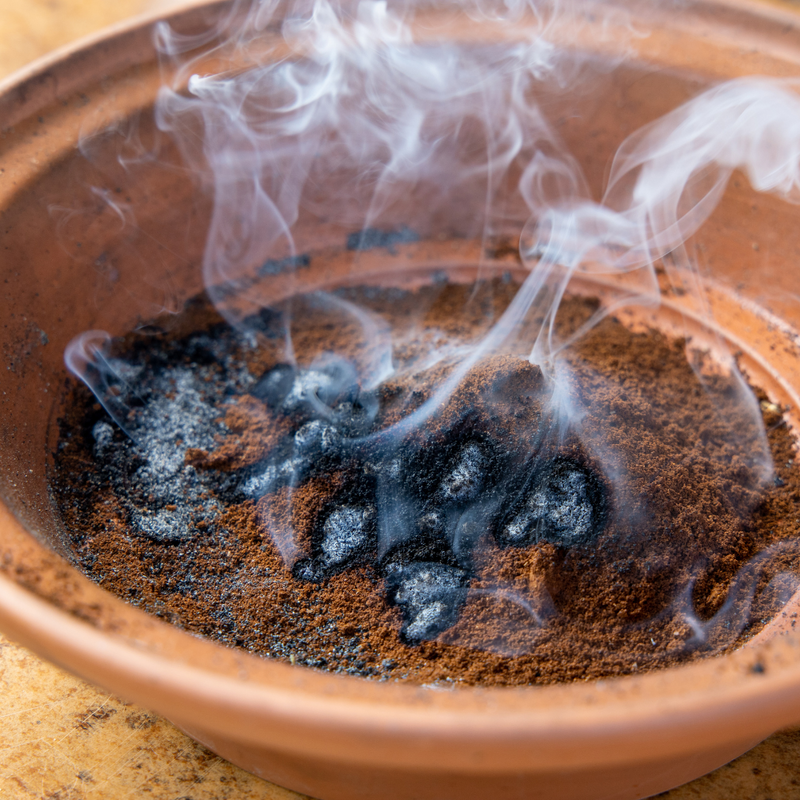The Root Chakra: A Comprehensive Guide to Balancing Your Muladhara
•Posted on June 12 2023

The Root Chakra: A Comprehensive Guide to Balancing Your Muladhara
Welcome to the realm of the first three Chakras, known as the Chakras of Matter, where the energy takes on a physical essence. At the very core lies the Root Chakra, the rock-solid foundation supporting all others. It's no coincidence that it embodies the element of Earth.
As the life force energy courses through this sacred center, a myriad of emotions are stirred, predominantly associated with stability and a deep-rooted connection to reality. Astrologically speaking, those grounded under Earth zodiac signs often embody unwavering stability.
Within this energy hub, a sense of security and tranquility engulfs us, providing the courage to embrace new challenges with boldness and ease. It fosters a confidence that fuels our journey towards conquering the unknown. Who would have thought that a single energy center could wield such profound influence in our lives?
Join us on this enlightening exploration as we unravel the significance of the Root Chakra and the pivotal role it plays in grounding us, fostering stability, and emboldening us to embrace new frontiers.

How does the root chakra take its coffee? Grounded, just like its energy!
The Root Chakra: What is it and How to Balance It
The root chakra, also known as the Muladhara, is the first chakra and is located at the base of the spine. This chakra is associated with grounding, stability, security, and a sense of belonging in the world. It represents the foundation of our being, and its energy is essential for overall physical, emotional, and spiritual health.

In this blog post, we will delve into the root chakra, exploring its meaning, symbolism, associated colors, and physical and emotional symptoms of an imbalanced chakra. We will also discuss how to balance the root chakra through various techniques, including yoga, meditation, aromatherapy, and more.
Meaning and Symbolism of the Root Chakra

The root chakra is associated with the earth element, and its energy is associated with grounding, stability, and a sense of belonging in the world. It represents our connection to the earth, and its balanced energy provides a foundation for overall physical, emotional, and spiritual health.
The root chakra is symbolized by a four-petaled lotus, and its color is red. The red color is associated with the root chakra, and it represents the energy of life, strength, and vitality. The four petals of the lotus symbolize the four aspects of the root chakra: physical, emotional, mental, and spiritual.
Physical and Emotional Symptoms of an Imbalanced Root Chakra
An imbalanced root chakra can result in physical and emotional symptoms, including:
Physical symptoms:
Lower back pain
Issues with the legs, feet, and immune system
Fatigue
Constipation or digestive issues
Emotional symptoms:
Feelings of anxiety and fear
Anger and irritability
Depression
Lack of motivation and direction in life
Feelings of insecurity and instability
How to Balance the Root Chakra
Balancing the root chakra is essential for overall physical, emotional, and spiritual health. Here are several ways to balance the root chakra:
Connect with nature: Spending time in nature is a great way to balance the root chakra. Take a walk in the park, sit in a garden, or hike in the woods. Connecting with the earth and nature will help to ground and stabilize the root chakra.
Practice yoga: Certain yoga poses, such as mountain pose, downward dog, and tree pose, can help to balance the root chakra and improve physical and emotional grounding. These poses help to stimulate the root chakra and increase its energy flow, leading to a more balanced chakra.
Use essential oils: Essential oils, such as sandalwood, vetiver, and frankincense, can be used to balance the root chakra and promote feelings of grounding and stability. The scents of these oils help to stimulate the root chakra and promote feelings of calm and security.
Meditate: Meditation can be an effective tool for balancing the root chakra. Focus on breathing deeply and grounding yourself in the present moment, visualizing a strong, rooted connection to the earth. This visualization will help to balance the root chakra and promote feelings of stability and security.
Wear red: The color red is associated with the root chakra. Wearing red clothing or carrying a red stone, such as garnet or ruby, can help to balance the root chakra. The energy of the red color will help to balance the root chakra, promoting feelings of grounding and stability.

"Embrace the grounding energy of your Root Chakra and feel your connection to the Earth beneath you. Trust in its stability and let it anchor you as you navigate through life."
What are the physical symptoms of when the Root Chakra is unbalanced?
When the root chakra is unbalanced, it may manifest in various physical symptoms, such as:
- Digestive problems: An unbalanced root chakra may cause digestive problems, such as constipation, diarrhea, or irritable bowel syndrome (IBS).
- Fatigue and lethargy: A blocked root chakra may cause feelings of fatigue and lethargy, leading to a lack of energy and motivation.
- Immune system issues: An unbalanced root chakra may weaken the immune system, making a person more susceptible to infections and illnesses.
- Lower back pain: The root chakra is located at the base of the spine, and an unbalanced root chakra may cause physical sensations such as lower back pain or tension.
- Reproductive system issues: An unbalanced root chakra may cause reproductive system issues, such as menstrual problems or sexual dysfunction.
- Sleep disturbances: A blocked root chakra may cause sleep disturbances, such as insomnia or nightmares.
- Circulatory system issues: An unbalanced root chakra may cause circulatory system issues, such as varicose veins or high blood pressure.
What are the emotional symptoms of when the Root Chakra is unbalanced?
When the root chakra is unbalanced or blocked, it may lead to various emotional and psychological symptoms, such as:
- Fear and anxiety: A blocked root chakra may cause feelings of fear and anxiety, particularly related to safety and security.
- Lack of trust: When the root chakra is unbalanced, a person may struggle to trust themselves or others, leading to feelings of suspicion and mistrust.
- Insecurity and instability: An unbalanced root chakra may cause a person to feel insecure and unstable in their relationships and life situations.
- Restlessness and impatience: A blocked root chakra may cause feelings of restlessness and impatience, leading to a lack of focus and inability to concentrate.
- Financial insecurity: When the root chakra is unbalanced, a person may struggle with financial instability and insecurity.
- Attachment to material possessions: An unbalanced root chakra may cause a person to become overly attached to material possessions, leading to a sense of greed and materialism.
- Lack of grounding: A blocked root chakra may cause a person to feel disconnected from their physical body and the world around them, leading to a lack of grounding and stability.

What sound is associated with the root chakra?
The sound or mantra commonly associated with the root chakra is "Lam". Chanting this mantra is believed to stimulate and balance the root chakra, as well as promote feelings of safety, security, and grounding.
In traditional Indian medicine, each chakra is associated with a specific sound or vibration, and chanting these sounds is believed to have therapeutic benefits. The sound "Lam" is believed to resonate with the frequency of the root chakra, promoting balance and harmony in the energy center.
However, it's important to note that the concept of chakras and their associated sounds is not based on scientific evidence and is rooted in spiritual and cultural traditions. While chanting the sound "Lam" may be a part of some spiritual practices, it is not a substitute for medical or psychological treatment.

What is the science behind the chakra?
The concept of chakras is based on traditional Indian medicine and spiritual practices, which have a different framework from modern Western science. While there is limited scientific evidence on chakras, some studies have explored the practices associated with balancing chakras, such as yoga and meditation, and their effects on physical and emotional well-being.
For example, studies have found that yoga and meditation can have positive effects on mental health, such as reducing stress, anxiety, and depression. Some research has also found that mindfulness-based interventions can improve physical health outcomes, such as reducing inflammation and improving immune function.
While these practices are not directly related to chakras, they may share some underlying principles, such as the idea of promoting balance and harmony within the body and mind. Additionally, some research has explored the role of energy fields in the body, such as the bioelectromagnetic fields generated by the heart and brain, which may have relevance to the idea of chakras as energy centers.
However, it's important to note that the concept of chakras is not based on scientific evidence and is rooted in spiritual and cultural traditions. The practices associated with balancing chakras may have benefits for physical and emotional well-being, but they should not be used as a substitute for medical or psychological treatment.
What do you call a root chakra that's feeling stressed? A little "rooted" in its problems!
What is the chakra?
In traditional Indian medicine and spiritual practices, a chakra is an energy center in the human body. The term "chakra" comes from the Sanskrit word for "wheel" or "disk," and is believed to represent the flow of energy or life force (called prana) throughout the body.
There are seven primary chakras located along the central channel of the body, from the base of the spine to the crown of the head. Each chakra is believed to be associated with specific physical, emotional, and spiritual functions, and is connected to different organs and body systems.
The seven chakras are:
- Root chakra (Muladhara): Located at the base of the spine, the root chakra is associated with feelings of safety, security, and grounding.
- Sacral chakra (Svadhisthana): Located in the lower abdomen, the sacral chakra is associated with creativity, sexuality, and emotional expression.
- Solar plexus chakra (Manipura): Located in the upper abdomen, the solar plexus chakra is associated with personal power, self-esteem, and confidence.
- Heart chakra (Anahata): Located in the center of the chest, the heart chakra is associated with love, compassion, and emotional balance.
- Throat chakra (Vishuddha): Located in the throat, the throat chakra is associated with communication, self-expression, and authenticity.
- Third eye chakra (Ajna): Located between the eyebrows, the third eye chakra is associated with intuition, perception, and spiritual insight.
- Crown chakra (Sahasrara): Located at the crown of the head, the crown chakra is associated with spiritual connection and consciousness.

"Celebrate your physical body and its connection to the Earth through your Root Chakra. Honor and care for your body, recognizing its strength and resilience."
Do you want to learn more about the other chakras? Click to continue your chakra journey.



Comments
0 Comments
Leave a Comment